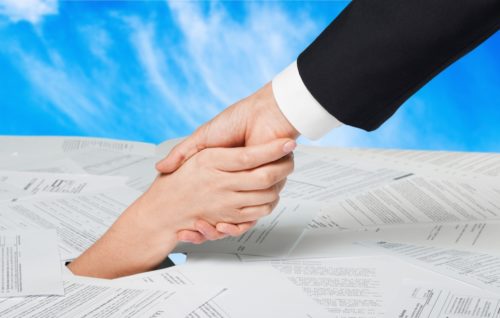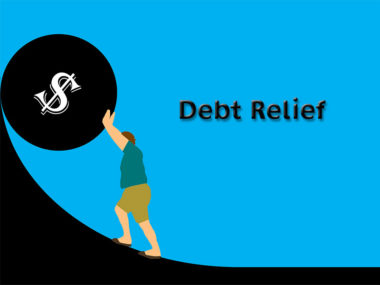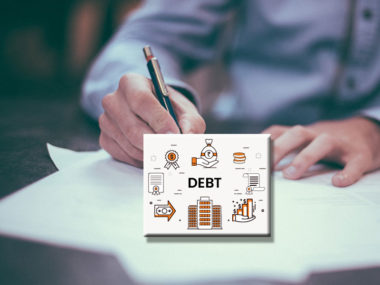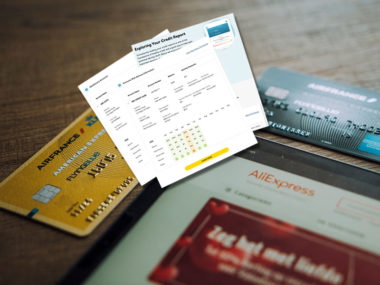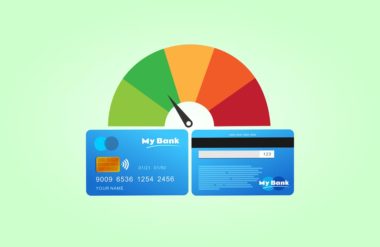You’ve heard of the term “bankruptcy” before, but you’re not perfectly clear on what it is or who it is for. Maybe you’ve looked into it, but you’re not sure if or when you should file for bankruptcy. Today, we’re going to take a closer look at the three most commonly used forms of bankruptcy and explain who they are for.
The term “bankruptcy” is often misused to explain someone who has had all of their assets taken away, but this isn’t the case. This system is used by courts to help those who are overwhelmed with debt. As such, we’ll take a look at how bankruptcy courts handle certain types of debt and they will do to help get you back on track.
Table of Contents
Bankruptcy Definition and Types of Bankruptcies
Essentially, bankruptcy is for individuals who are overwhelmed by debt and don’t see a way to fulfill those debts according to their current terms. When you file for bankruptcy, you’re asking the federal court to help you with your debt, which means that your case will be assigned to a bankruptcy court that will examine it. They will compare your assets against your debts and ensure that bankruptcy is the only possible solution for you. If approved, the court will help you come up with a plan for paying back your debt.
They can do this in a few different ways, which is why it’s important to understand that there are a few different types of bankruptcy. As such, if you think that bankruptcy could help you, you’ll need to become familiar with the most common types of bankruptcy: chapters 7, 11, and 13.
What Is Chapter 7 Bankruptcy?
In any bankruptcy claim, the court may rule for liquidation, forgiveness, and/or reorganization. In a chapter 7 claim, the court usually focuses on liquidation and forgiveness. In the liquidation process, your physical assets, like a house or car, may be repossessed in order to be sold and repay your debt. Substantial items that have been purchased may be used in this way, but smaller items are likely safe. The debts that might be liquidated are called secured debts. They are debts attached to something that can be sold in order for the seller or bank to get their money back.
On the other hand, you’re also dealing with unsecured debts. These are debts that don’t have a physical item attached to the loan. In a chapter 7 bankruptcy, most of these debts will likely be forgiven, which means you don’t have to come up with a plan to repay it. The slate will be wiped clean and you can start over fresh with these types of debts. These debts might be something like a personal loan or credit card debt.
In order to qualify for a chapter 7 bankruptcy claim, you must be able to prove that your finances are not adequate to be able to pay back any of your debts. As a result, the bank will forgive you for most secured debts and will use your secured debts to pay back the rest. It’s not as likely in this chapter that the bank will set up a payment plan for your debts, but every situation is different, so it is still a possibility.
What Is Chapter 13 Bankruptcy?
This form of bankruptcy follows the reorganization structure more than forgiveness and liquidation. In chapter 13 claims, you will work with the court to come up with an appropriate repayment plan for many of your debts. In some cases, you may not have to give up your property in order to come to an agreement. For example, if you are behind on car payments, the court may decide that you can keep the car and sign a contract that shows you will pay back the money within a specific amount of time — usually three to five years.
Your repayment plan is completely unique to you because it is based off your your debts and current income. As such, only those who have a steady, reliable source of income will be able to qualify for a chapter 13 claim. In addition, in order to qualify you must not have debts exceeding a certain amount. As of 2016, your secured debts must not exceed $1,184,200 and your unsecured debts cannot be above $394,725. This limit changes every few years, but this one should last until 2019.
As with the chapter 7 claim, it is possible that the court might decide to forgive you for some of your loans and ask you to pay back the rest, it all completely depends on your situation. However, with this chapter, expect mostly a reorganization and repayment structure.
What Is Chapter 11 Bankruptcy?
This form of bankruptcy works a bit different than the others. Chapter 11 claims are mostly used for businesses or companies that have overwhelming debt. Unlike chapter 13, this form of bankruptcy deals with high volumes of debt. If your debt exceeds the limits of chapter thirteen, as we listed above, you’ll probably be looking at chapter 11 instead.
Although it is commonly used for businesses, individuals with higher debt than what is allowed in chapter 13 can apply as well. This claim also focuses on a reorganization and repayment structure, but the process might be more lengthy and expensive depending to the volume of debts a person possesses.
How Does Bankruptcy Work?
Now that you have an overview of the main chapters of bankruptcy, it’s time to clear up some misconceptions about bankruptcy. Although you may have heard negative things about the term, bankruptcy really is fairly common and has been put in place to help individuals with overwhelming debt. It’s a way to start completely over with your debts and not have to stress about never being able to catch up. You should be aware that bankruptcy will have an affect on your credit, but it does fall off after 10 years.
If you choose to file for bankruptcy, your assigned bankruptcy court officials will work with you to put you in the best possible situation after the rulings are over. To put it plainly, the bankruptcy court is there to protect you. After the court reaches a decision regarding your debt, you will be protected by a court order. This means, you have to abide by the court ruling, but debt collectors have to as well. They cannot attempt to collect debt from you aside from how it is listed in the agreement.
For example, if you’ve settled on a repayment plan of a certain dollar amount per month, debt collectors cannot ask you for any more than that amount. In addition, if you’ve been forgiven for your debts, they cannot ask you to repay the amount you owed before the agreement. You have complete protection from collectors trying to harass you any further.
With that being said, you can rest assured knowing that you’ll leave your court proceedings without the heavy burden of debt and collector harassment. However, please keep in mind that every case is completely different and the court may decide on different rulings depending on your situation. The information provided is simply an outline of how most cases are handled. The court will take a look at your specific scenario and will act accordingly.
Image Source: https://depositphotos.com/
